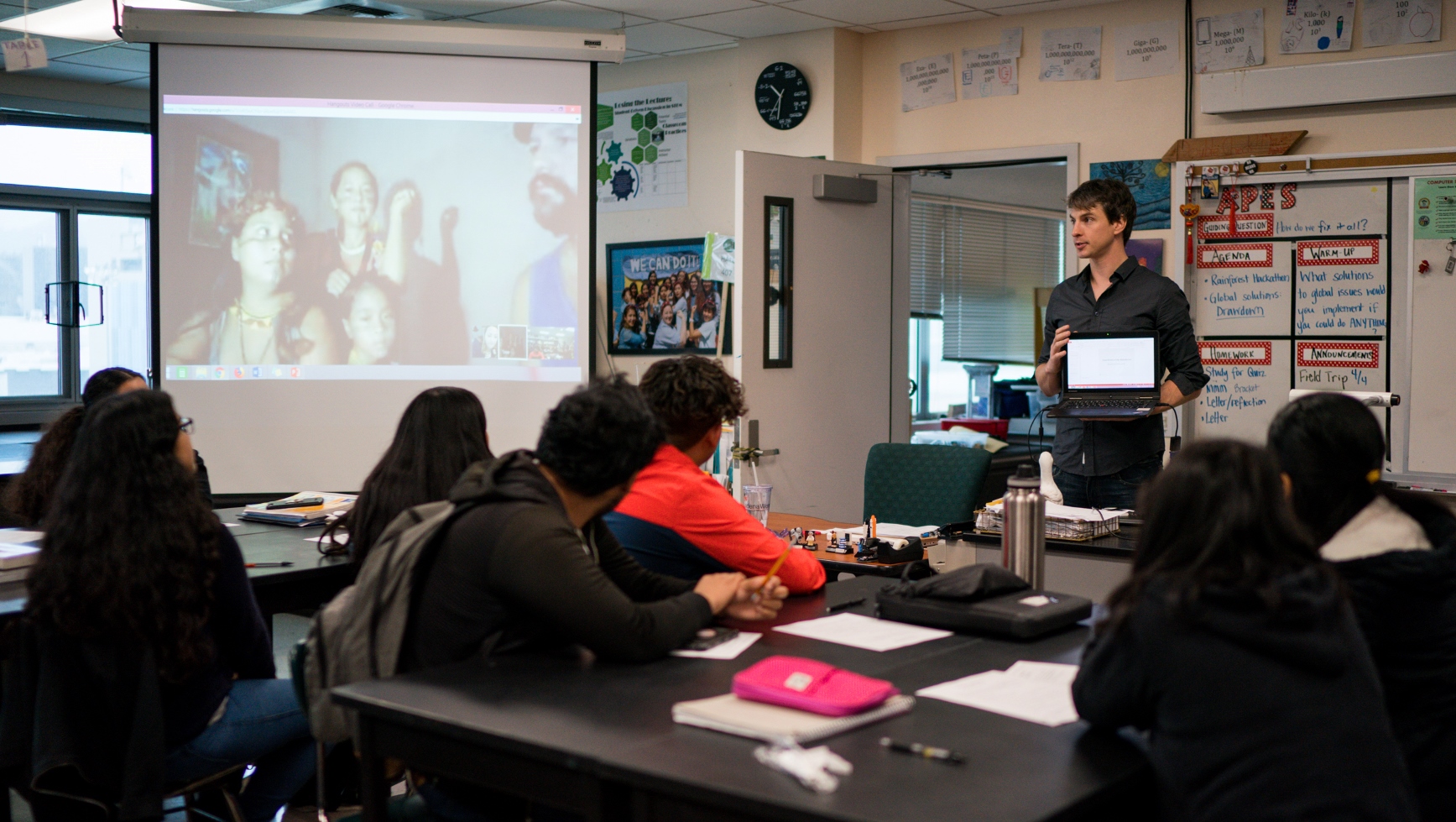- Students in several science and tech schools in California are learning to design and build Guardians, acoustic monitoring devices to help protect rainforests from illegal logging while keeping a record of the sounds made by forest wildlife.
- Led by the non-profit Rainforest Connection, the students are constructing the Guardians from old, recycled smartphones armed with solar power and Google’s open source machine learning framework, TensorFlow, which transforms them into field-tough listening tools.
- The program also addresses the challenges of designing and developing technology for humid, rugged, remote field conditions typical of indigenous reserves and protected areas.
Hundreds of students from science and technology programs around the city of Los Angeles, California have begun participating in a hands-on effort to apply ingenuity and technology to protect the world’s rainforests.
The NGO Rainforest Connection (RFCx) has developed a “Planet Guardians” program to directly involve tech-minded students in nature conservation while building their skills and creativity. The science, technology, engineering, and math (STEM) students will build devices RFCx calls “Guardians”—portable acoustic monitoring devices that the group installs high up in a rainforest tree, usually around a reserve’s perimeter or along roads, where they listen to and record the sounds of the forest around them.

The students will construct the Guardian devices from recycled smartphones newly armed with Google’s open-source machine-learning framework, TensorFlow. Even phones several years old have substantial computing power that can run sophisticated software (RFCx accepts phone donations).

Each device collects and scans the continuous stream of sound in the roughly 300 hectares (740 acres) around it. If the software identifies various noises associated with human intrusion—such as chain saws, trucks, and gunshots—it alerts local rangers in real-time who can then respond on the ground. The solar panels used to power the devices enable them to run 24 hours a day for months in the rainforest.
Workshops will provide students with hands-on experience in electronics, solar power, Android software development, and an introduction to developing artificial-intelligence-driven neural networks built on Google’s TensorFlow.

At the same time, the participants learn why RFCx is building these strange-looking gadgets through a new film by Google. “Beneath the Canopy” describes the work by RFCx founder and CEO Topher White in Brazil to help the Tembé indigenous tribe discourage illegal loggers that invade and damage their lands.
The students also participate in a live Google Hangout with Tembé tribal rangers, before building the Guardian devices that will be sent to the Tembé and other groups to help protect their forests.
“Our devices are currently [in] some of our planet’s most fragile rainforests,” White said in a statement. “We believe having students involved in building “Guardians” is an incredible STEM learning activity and nurtures an interest in protecting our environment at a very young age.”

Making tech work in rugged environments
The student workshops will combine the How and the Why of building the Guardian devices.
The curriculum introduces students to rainforest ecosystems, the sounds one hears there, and how technology can listen for unexpected (human) noise. It also presents the challenges of rugged terrain, such as powering a mobile phone for months without a charger, keeping electronics dry in heavy rain and humidity, and communicating where cell coverage is poor.
RFCx expects to install the new student-built Guardians in Brazil, Costa Rica, Indonesia, and Peru, in preparation for Earth Day 2018. “We’ll be producing 45-50 Guardians this week and eventually, we could produce many hundreds or even thousands as the program expands nationally,” White told Mongabay-Wildtech.

Once RFCx installs and activates the devices in the field, the California students will be able to stay in touch with “their” Guardians, RFCx’s free mobile app that offers live transmission from the rainforest. Students will also receive real-time text alerts about any illegal logging activity detected by their device, as well as notifications about the sounds of rare and endangered species, and news about other school’s Guardians.
Hearing their products at work inside the forest also ties the students’ efforts with the larger world, specifically the struggles of conservationists and indigenous groups to protect forests.

RFCx wants to enable STEM programs across the U.S. to build and install their own Guardians, White said. By 2019, RFCx will offer a downloadable lesson plan for teachers and students with instructions on how to both build and install the devices.
Over the next few years, the group plans to make its audio data available to research universities around the world with projects on rare and endangered species.
You can listen to Topher White discuss RFCx’s work in a recent Mongabay podcast here.
FEEDBACK: Use this form to send a message to the editor of this post. If you want to post a public comment, you can do that at the bottom of the page.